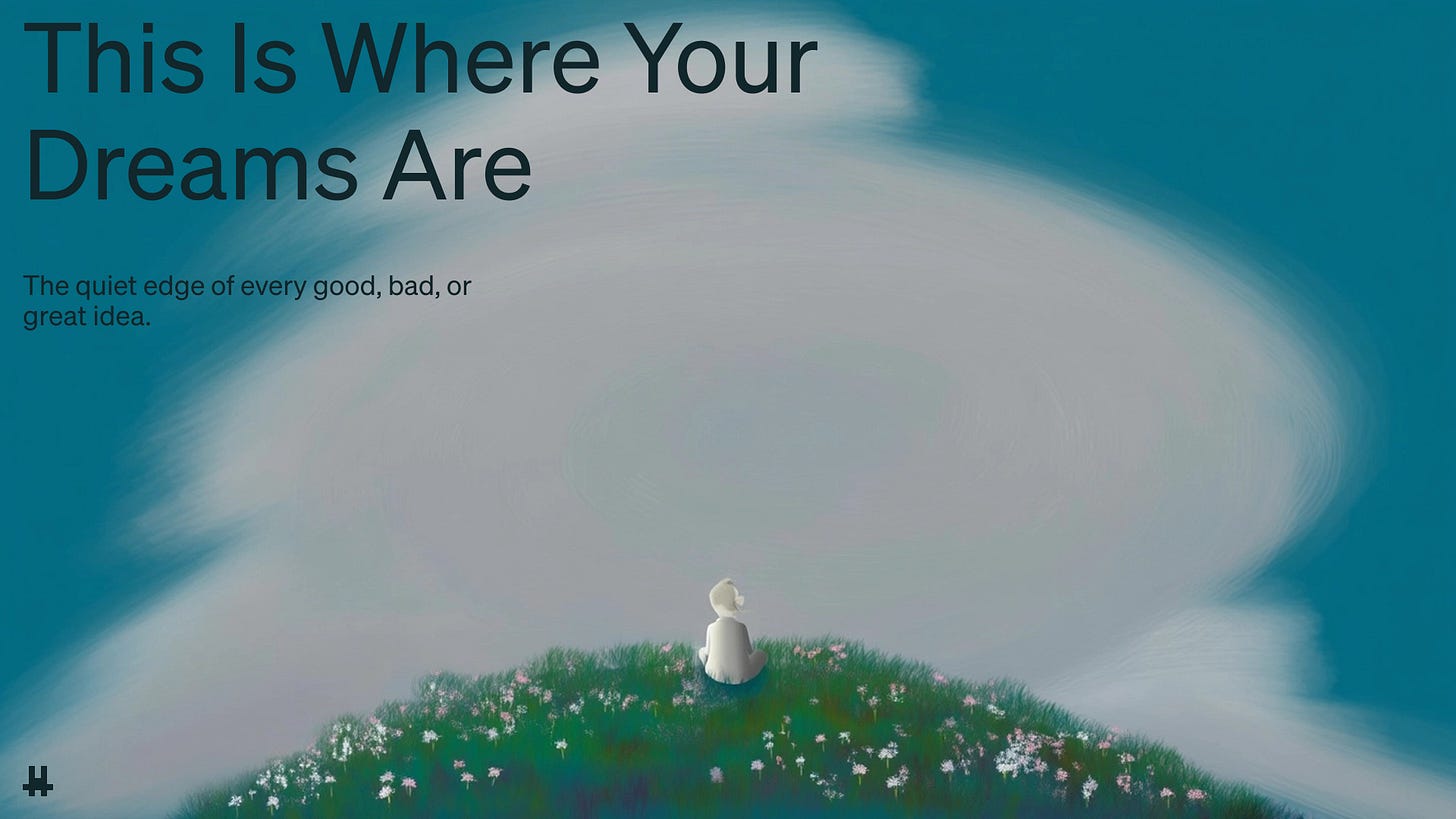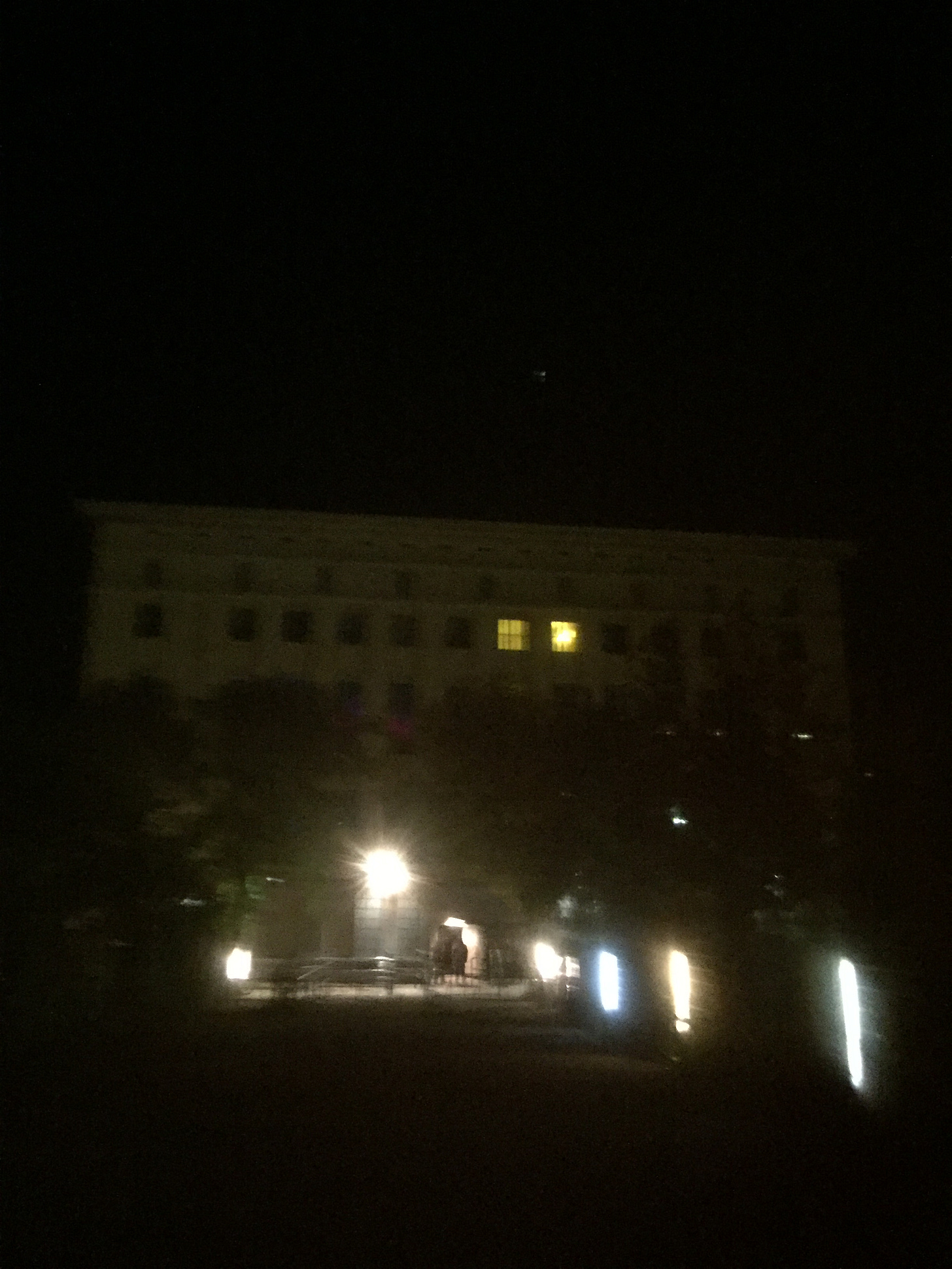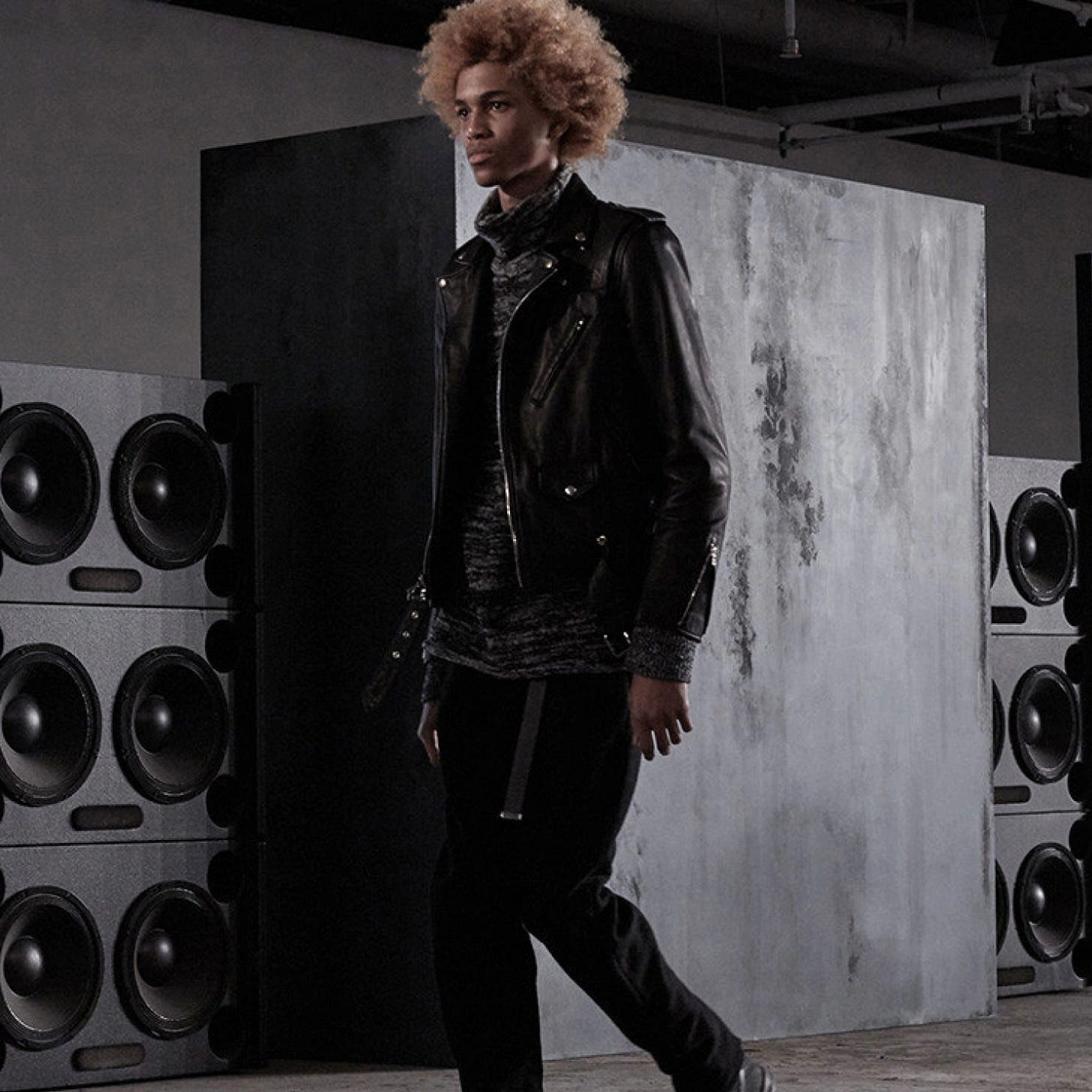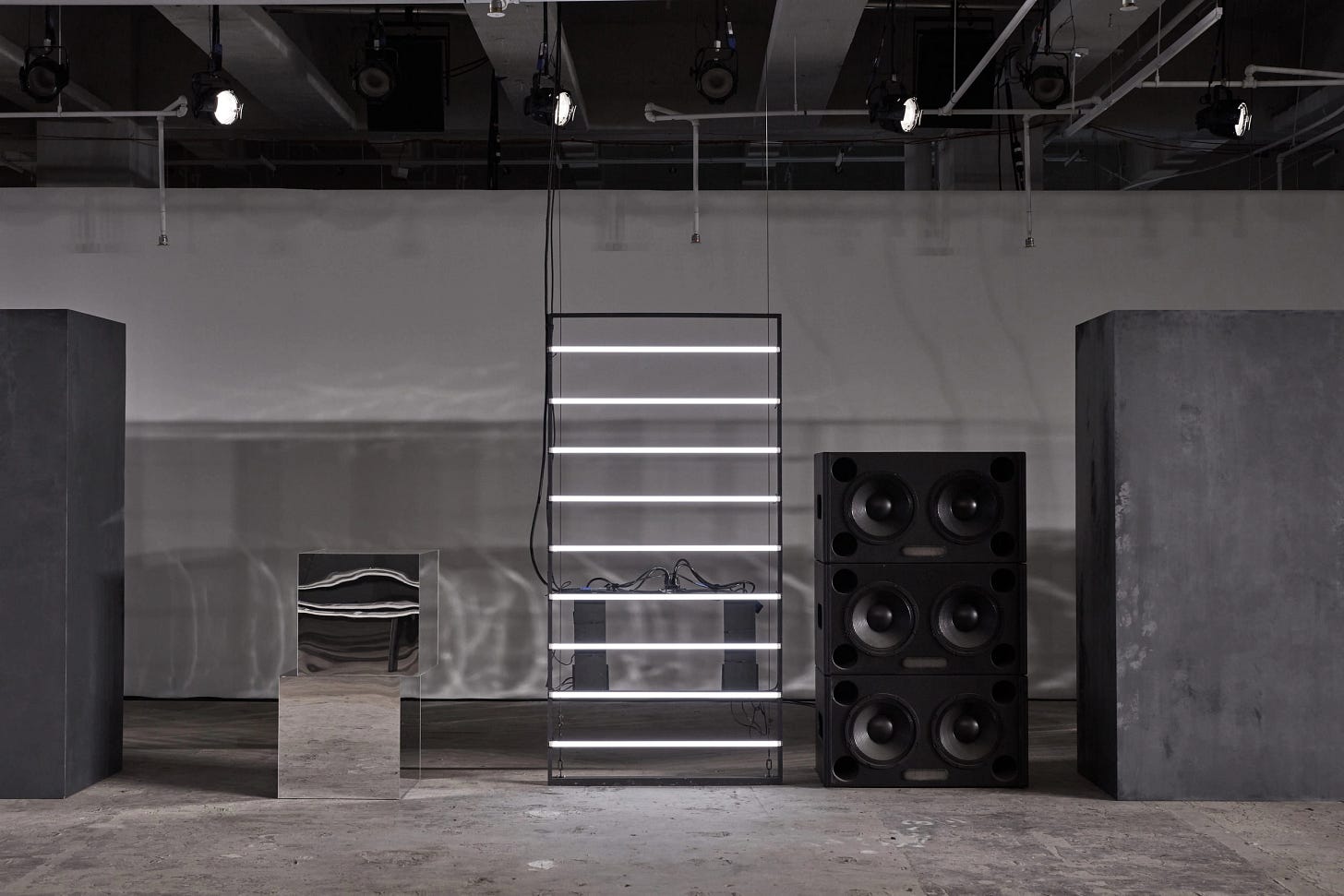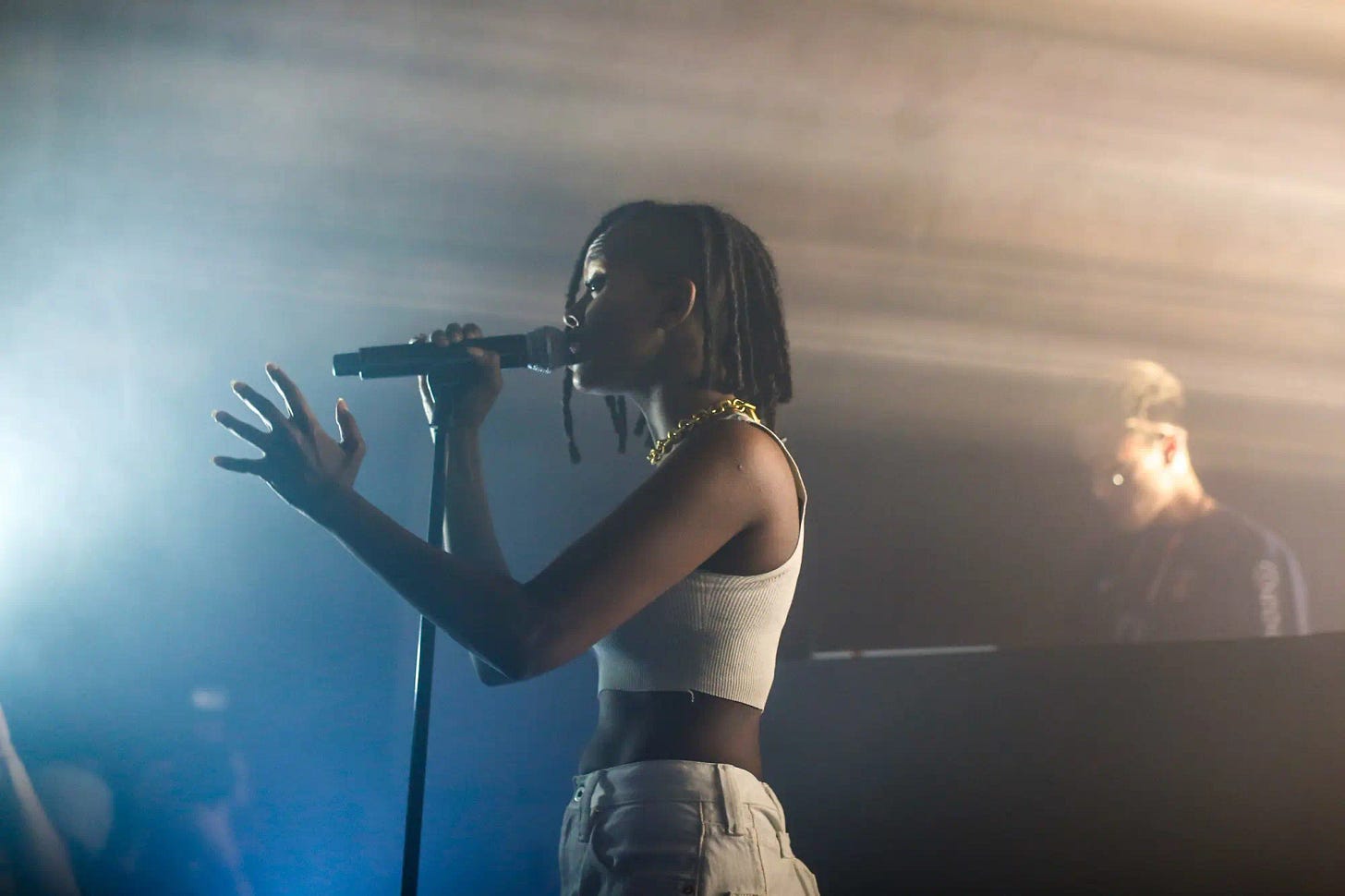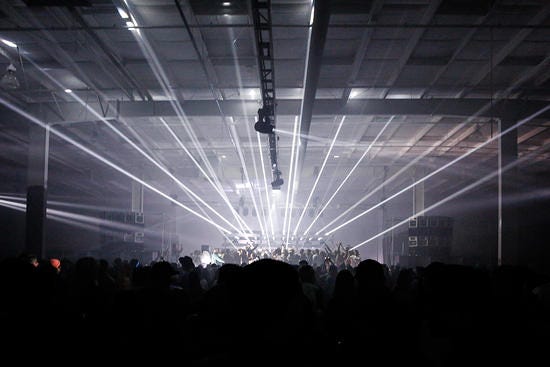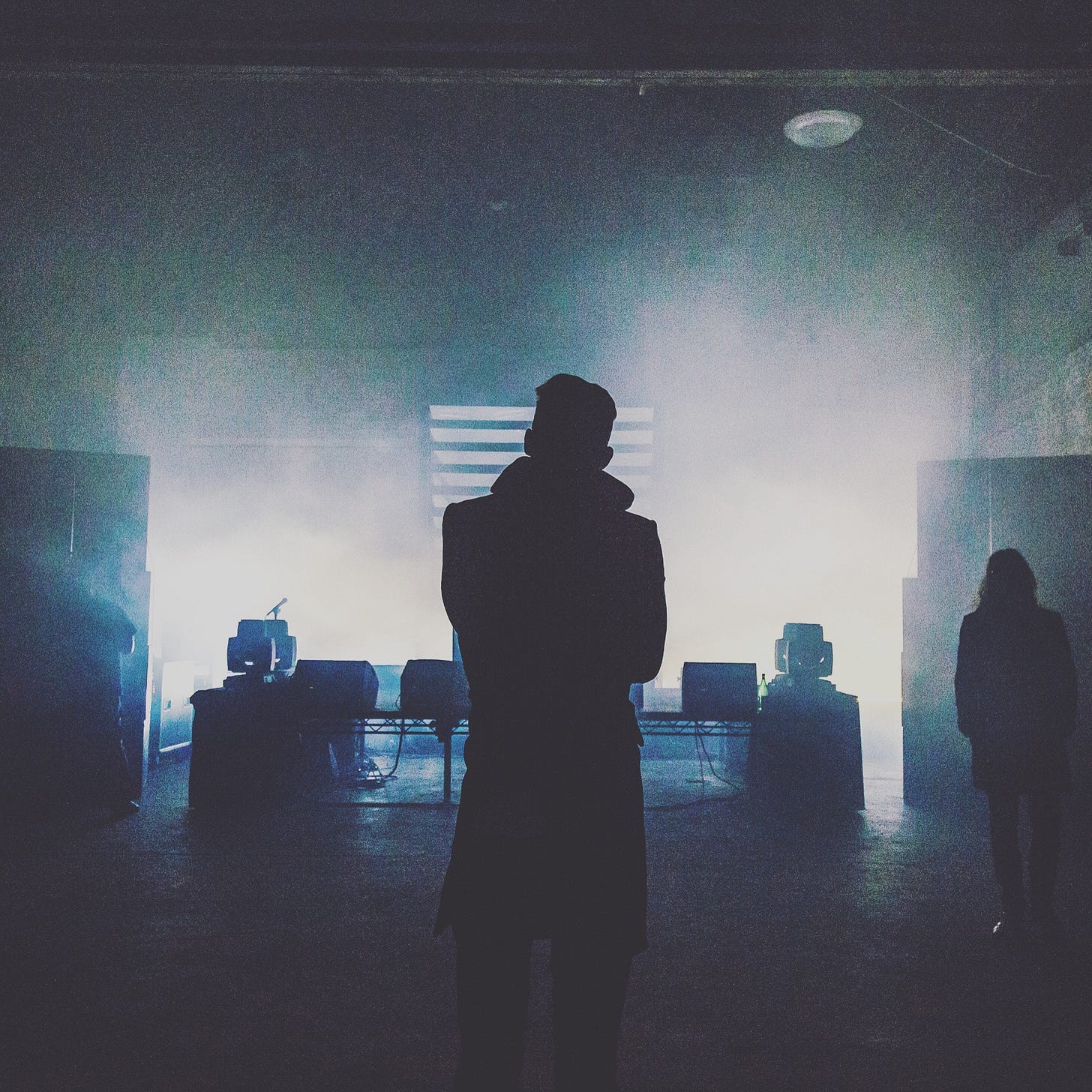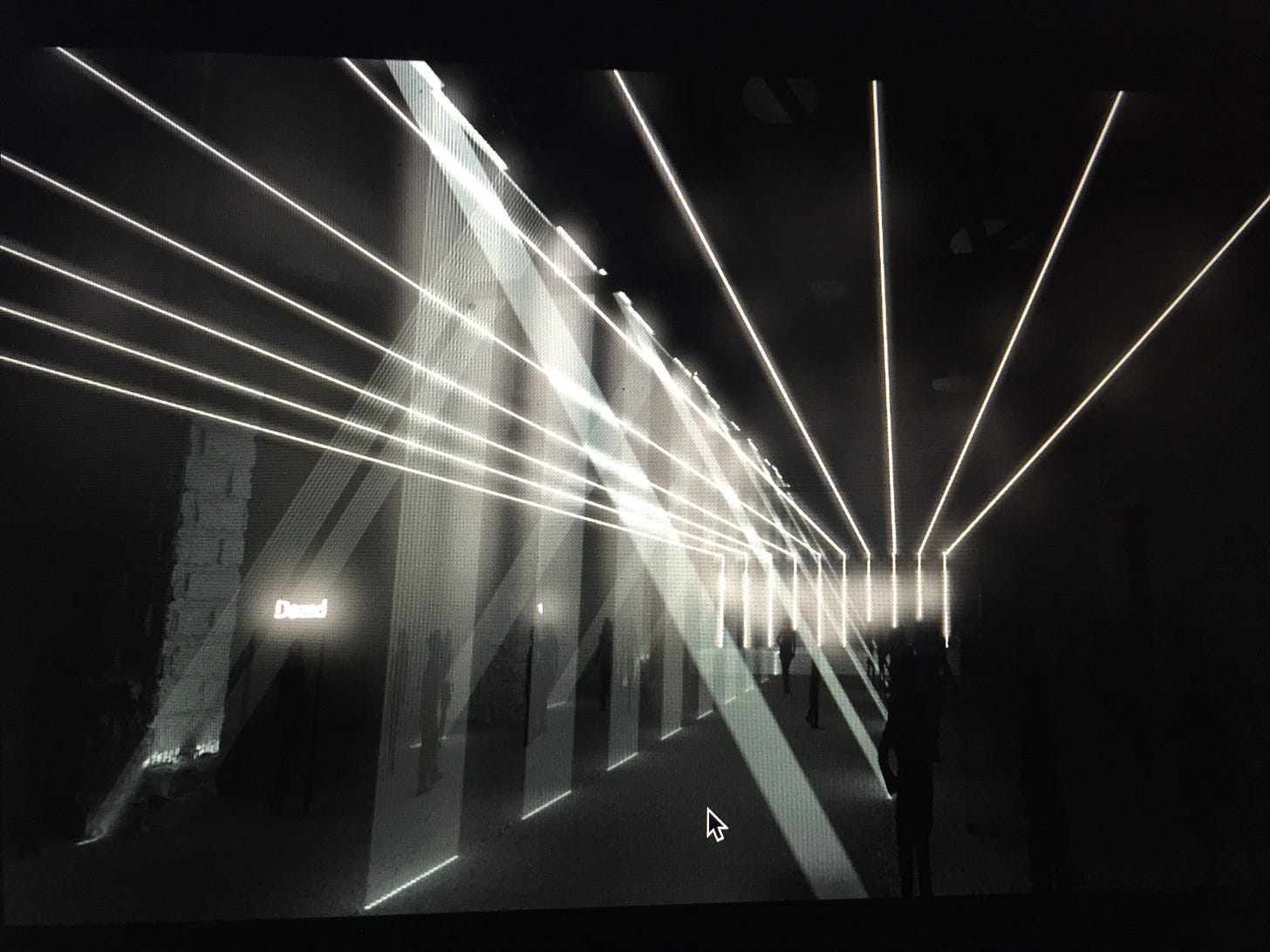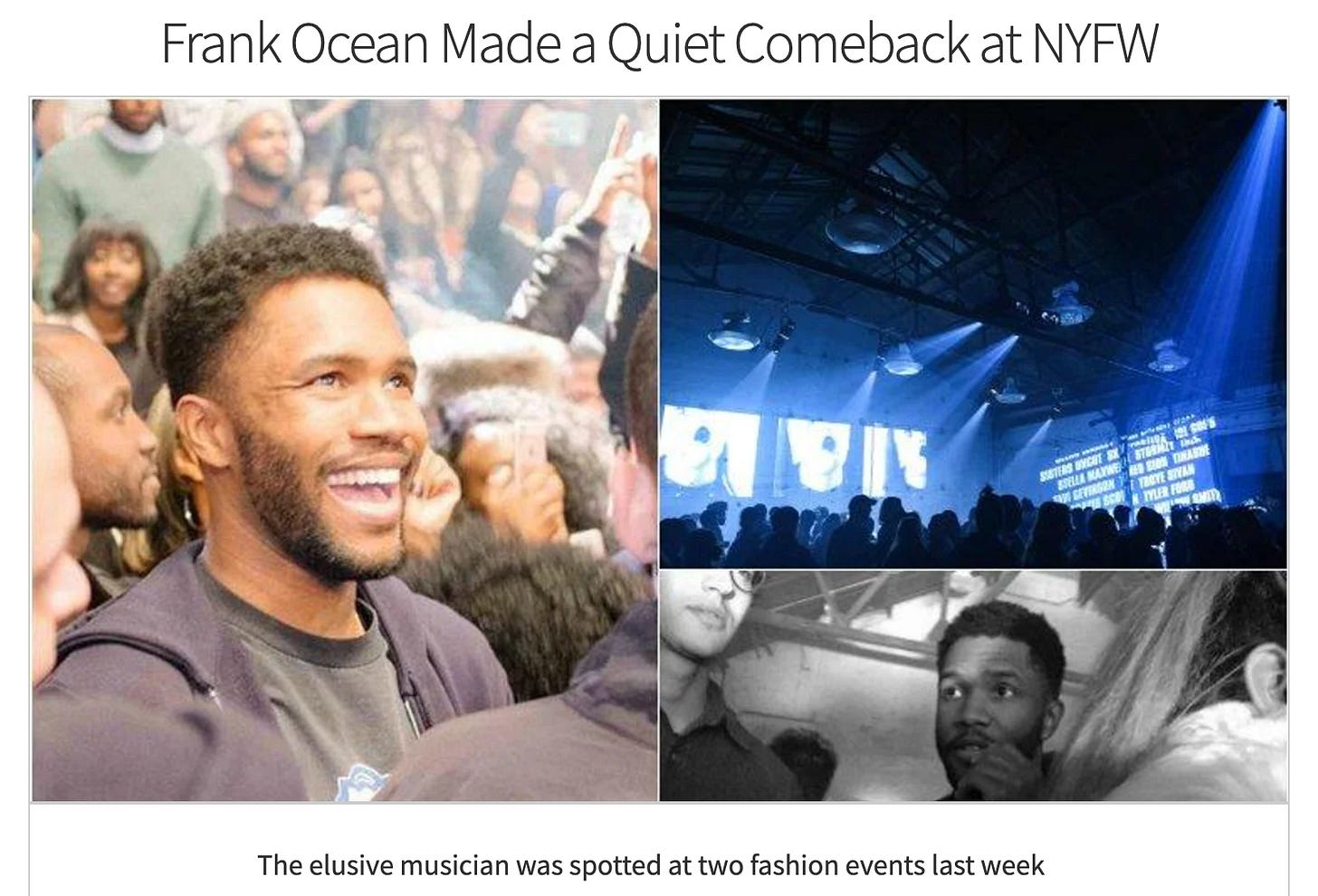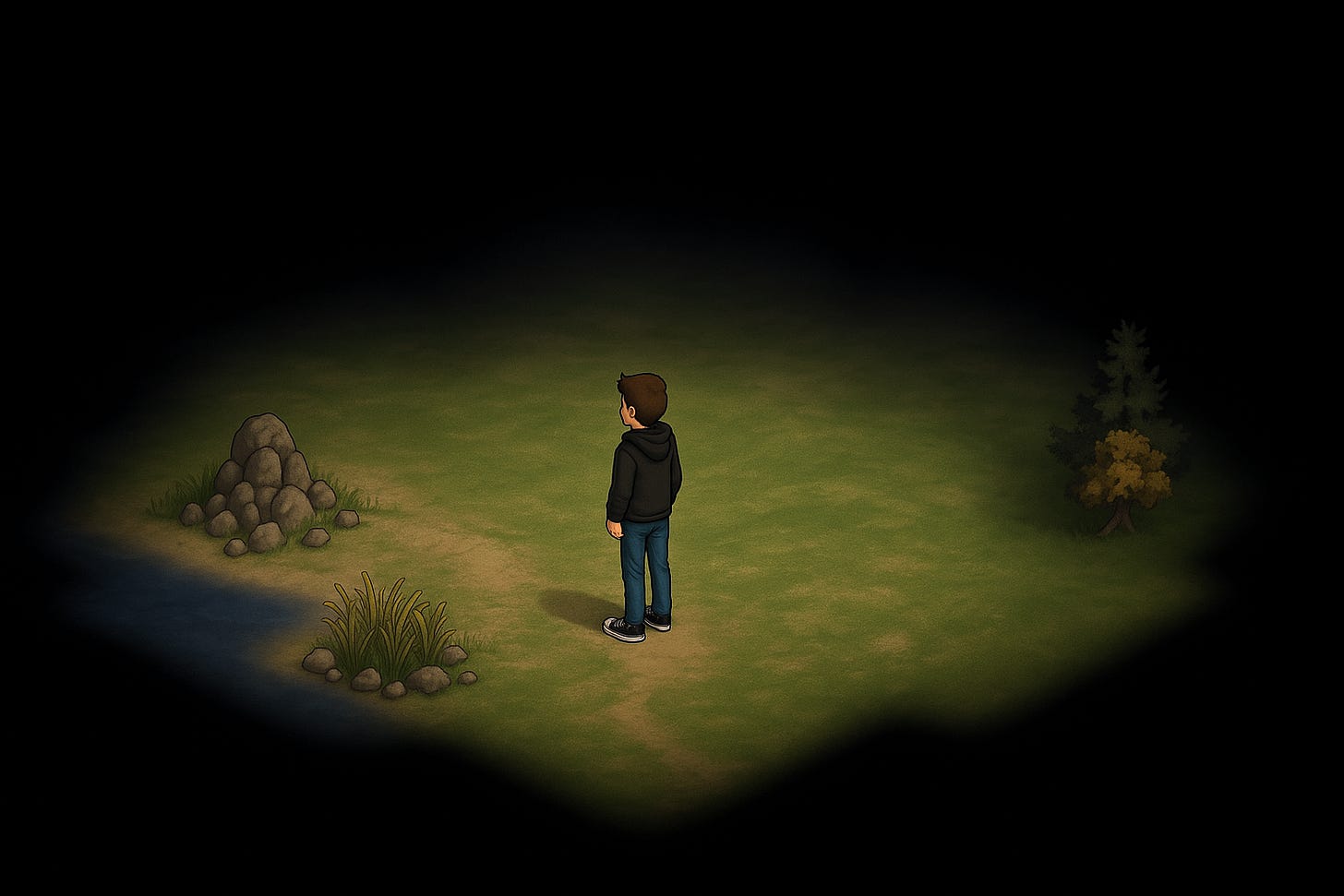I once got lost in Berghain for 20 hours.
I was obsessed with how the sound filled the cavernous rooms in such a warm way. You could actually have a conversation with the person next to you, or you could fully get lost in the music and forget what time it was.
I was on a mission to understand how that sound worked.
I wanted to bring that feeling to the projects I was working on back in the U.S.
I was curiosity maxxing.
This is what has always driven me.
The compass that has quietly, consistently shaped my entire life.
A bit of ambition, a bit of hustle, sure.
But mostly, curiosity.
Curiosity is not passive.
It’s something we’re all born with, but more importantly—and something I’ve learned through the years—it’s an active discipline.
A practiced orientation toward the unknown.
A muscle that must be trained, stretched, and sometimes broken open to grow.
We tend to think of curiosity as a childlike quality. Something innate and effortless.
And sadly, something that wanes and disappears with time.
But in reality, it’s one of the most powerful and underutilized tools in both creative and professional life.
It’s what pushes us to ask better questions, to question the answers we’re given, and to keep looking even when things feel complete.
It’s what turns work into play, play into progress, and progress into innovation.
That trip to Berghain led to a project with John Elliott, a dear friend and early collaborator of mine.
We tried to turn the runway into that same feeling, with massive industrial speakers.
There’s something so powerful and raw about them.
I carried this energy into a project we did with Calvin Klein. I wanted to bring the spirit of all-encompassing sound to my backyard in New York City.
We pitched a concept for a series of raves built around an undesigned warehouse space, flanked by towering Funktion Ones. With a collection of artists that maybe wouldn’t normally play together.
Heron and Kalela.
Virgil and Alesso.
It’s still one of my favorite projects to date.
I’ll never forget seeing Frank Ocean standing inches away from the subwoofer, dancing, getting lost in a DJ set by Heron Preston, on a stage we commissioned Tobias Rylander to design. Mirrors, with light bouncing in every direction.
It was that raw feeling I was searching for.
And it was powered entirely by curiosity.
But… how does one become curious?
Is it gifted?
No.
Innate?
When nurtured.
Learned?
Absolutely.
While I don’t pretend to have all the answers, I can glean from sixteen or so odd years of being professionally curious—and roughly the same amount of time before that of being, well, unprofessionally curious.
So the question becomes: how do you cultivate it?
That’s the real trick. Because while we all arrive in the world equipped with curiosity, few of us are taught how to sustain it.
Below are a few distilled tools I’ve developed and shared with others along the way. Simple provocations that have helped me unlock, or reawaken, that deeper sense of creative hunger:
Ask “Why?” Relentlessly
Curiosity begins with permission. You have to give yourself the right to question everything. Not just what you’re told, but what you think you know. Asking “Why?” over and over isn’t annoying to the right people—it’s magnetic. It signals that you care, that you’re trying to understand at a deeper level. People who want to help you grow will lean in, not pull away.Embrace the Unknown
The only way to make sense of change is to plunge into it, move with it, and join the dance. We often want certainty before we act, but certainty is an illusion. Curiosity thrives when you stop needing the full plan and instead step forward into the unknown.Change Your Routine
Stagnation is curiosity’s worst enemy. Listen to music you think you hate. Read something difficult. Take a different route to class. Small disruptions create the space for new connections. Curiosity lives at the edges of comfort.Water Your Mental Garden
Your mind is not a machine. It’s a garden. It needs tending. Read, reflect, explore. Be deliberate about what you put in, because it will shape what you get out. Curiosity doesn’t bloom without care.Listen. Really Listen
Let someone else talk. Let them finish. Let their perspective reframe yours. Listening is one of the simplest and most overlooked ways to expand what you think is possible. Often, the answers you’re looking for are embedded in what others are saying. You just need to be quiet enough to hear them.Seek New Inputs
The more new experiences you collect, the more dots you have to connect. Go out of your way to try things that don’t make obvious sense. Go to the museum. Sit in on a class outside your major. Say yes to the random invite. These become the raw materials of creativity.Externalize Your Thoughts
Say them out loud. Write them down. Share them with someone. Thoughts that stay trapped in your mind risk becoming echo chambers, endlessly bouncing around, unchallenged. Get them out. Let them breathe. Let them evolve.Seek Opposing Views
Nothing good happens in an echo chamber. Curiosity requires friction. Actively seek out opinions and worldviews that challenge your own. Not to fight, but to learn. That’s how ideas grow legs.Cultivate Wonder
Don’t just look for the grand revelation. Find the beauty in small, ordinary things. A bit of light on a sidewalk. The arrangement of books on a shelf. The fact that we’re even here, reading this sentence. Gratitude sharpens your awareness, and awareness heightens your curiosity.Be Curious On Purpose
Curiosity isn’t a personality trait. It’s a posture. A practice. A perspective. And it’s one of the most underrated advantages you can develop in a world moving as fast as ours.It’s what gives rise to purpose, not the other way around.
As I’ve come to believe through building brands, launching companies, and working with brilliant people across industries: purpose rarely shows up in a moment of clarity. It reveals itself through movement, through making, through wondering what happens if you try something different.
And above all—and most utterly importantly—do not let any NPC lock you into the belief that grinding your life away will provide you with breakthrough, fulfillment, innovation, or progress. Because it won’t.
The outliers are where the magic happens. Where you push what’s possible. Where you find newness.
It isn’t always easy to avoid that trap. I catch myself here all the time. The endless loop of TikTok life coaches, self-help books, the “optimize and maximize” machine.
But sometimes, a trip to Berghain, or a simple walk down the street, to understand what the unknown can do to you is not only important. It’s mandatory.
The edges of the unknown are where the map expands. And the journey grows into something more.
Whether you’re naming a company, starting a project, or figuring out what you want from your life—it all starts here.
So ask.
Seek.
Be open.
Don’t be precious.
Flip your perspective.
Keep going.
Your dreams are coming true.
This essay is adapted from a guest lecture I delivered on Curiosity first presented at USC one year ago, with Dr. Kristen Schiele and Elena Hansen.
.png)

